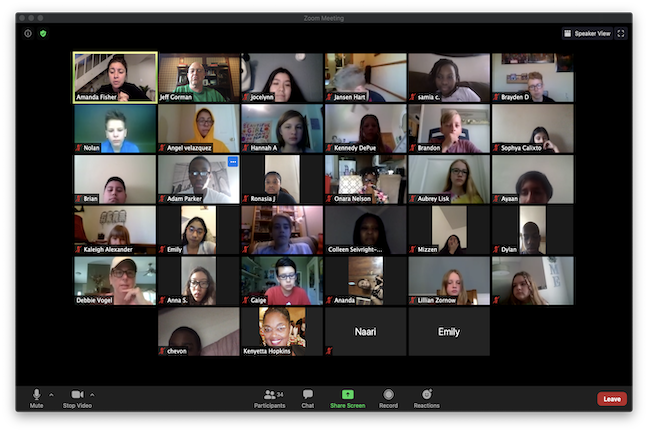This is what an equity-driven school turnaround looks like in Mount Vernon, New York: three new themed high schools, full-day prekindergarten, neighborhood schools that replaced a failing middle school program, and on-site health care, among other enhancements.
In 2014, when Ken Hamilton became superintendent of Mount Vernon City School District—a dense and impoverished city on the northern border of New York City—he almost immediately asked the community to approve a $108 million bond to rebuild a decaying education system.
They approved the initiative, call the “20/20 Vision,” by a ratio of 3-to-1.
“Providing our students with resources that are on par with some of the other communities has been a significant challenge,” says Hamilton, who had previously led an affluent district in New Jersey.
More from DA: How educators can be part of dismantling systemic racism
“We’ve been trying to restore resources that have been depleted—buildings in disrepair, antiquated supplies and material, textbooks that have not been updated—we’ve been working to get caught up and we’ve been able to do that,” Hamilton says.
Mount Vernon—where 97% of students qualify for free- and reduced-price lunch—is bordered to the north by the wealthy New York suburbs of Westchester County.
Some 13% of the students have disabilities while 10% are homeless in a city that measures only 4.4 square miles but is home to about 80,000 people, many of whom are immigrants from islands in the Caribbean.
When Hamilton and his assistant superintendent, Jeff Gorman, arrived, Mount Vernon’s elementary schools shared nurses and counselors.
“We walked into one kitchen that people walked away from 10 years ago and there was still grease in the fryer, we walked into classrooms with a hole in the wall and where the windows didn’t go up and down,” Hamilton says. “We walked in to find o an Olympic-sized swimming pool that had been empty for over a decade. Folks had started to accept this as normal.”
School turnaround tactics
Now, each elementary school has its own nurse and counselor. Hamilton and his team have added afterschool tutoring, extended-year programs and summer enrichment, and hired math and reading specialists, in their efforts to create equity and close achievement gaps.
Hamilton also eliminated the district’s middle schools, which, in line with a national trend, were showing low levels of student achievement. Some of the bond funds went to rebuilding the new K-8 schools with state-of-the-art science labs, enhanced instructional technology and other resources that better prepare students for high school.
In the last few years, more middle school-aged students have returned to the district from charter and private schools, Hamilton says.
More from DA: What COVID and online learning taught Florida school leaders
Mount Vernon’s three high schools have been revamped, each with themed a pathway: STEM, performing arts and a comprehensive curriculum with a CTE focus.
The CTE program offers career tracks in nursing, auto shop, photography, TV production, graphic design and cosmetology, among other professions, and administrators are now preparing to launch a culinary program.
The STEAM academy offers student dual-college credit through a pair of local institutions, allowing students to gain up to 60 credits by the time they graduate high school.
The performing arts high school features a 1,500-seat auditorium as well as state-of-the-art dance studios and rehearsal labs.
“We’re very mindful of what the research says in terms of the jobs that will be available in the next decade,” Hamilton says. “Students need multiple pathways to be successful, whether they choose to go to college or not. And college isn’t the only way to gain a decent living.”
Hamilton and his team have also made the district more competitive in terms of teacher salaries and are now working to ensure they are retaining these educators, rather than losing them to the surrounding higher-paying districts.
“We don’t want to become just a training camp,” Hamilton says.
Coping with COVID-19 closures
The coronavirus school closures have posed some of the same equity Hamilton, Gorman and their team confronted when they began the district turnaround.
 Because of the lack of access to health care in his community and the rapid spread of coronavirus in New York City and Westchester County, Hamilton said he shut down his district before the state of New York ordered schools closed.
Because of the lack of access to health care in his community and the rapid spread of coronavirus in New York City and Westchester County, Hamilton said he shut down his district before the state of New York ordered schools closed.
Teachers participating in all-day training in online learning, and the district distributing laptops to students in a single day. Some large families with multiple students got more than one laptop.
More from DA: What a new survey says about students’ mental health
Administrators also worked with local internet providers, such as Altice, Altima and Direct TV, to get free service to families, particularly those in the city’s homeless shelters.
District educators gave special attention to providing high seniors with extra resources to help them complete all their credits. This year, these students had a better opportunity to graduate as the state suspended its regents exams, Hamilton says.
“Even now, as we plan for what September may look like, we’re taking learnings from our most recent experiences,” Hamilton says. “We’re using that expand and modify our plans for several options, including a hybrid approach.”







